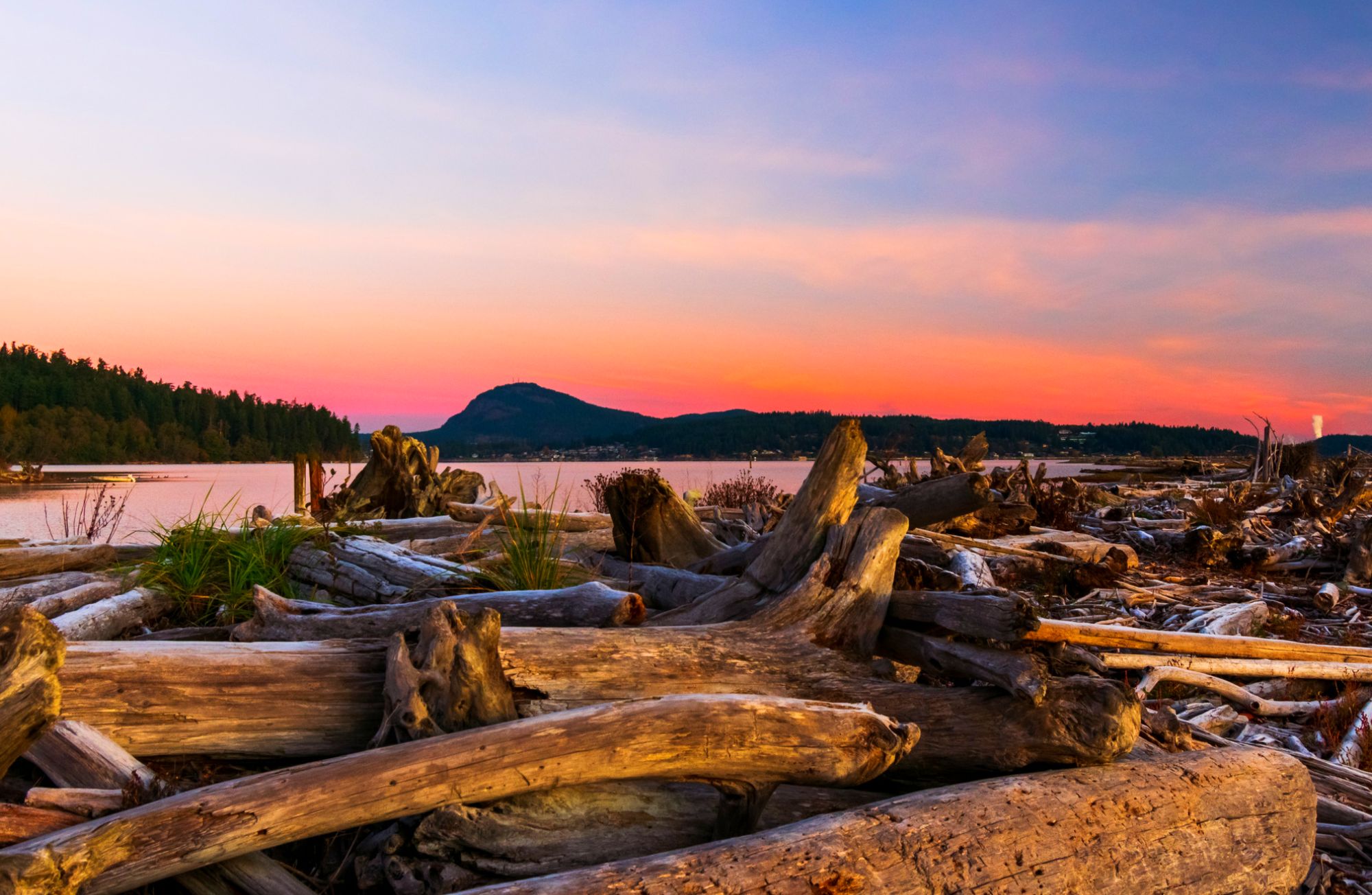There’s something magical about the piles of driftwood that line the beaches of Whidbey Island and other coastal spots throughout the Pacific Northwest. These bleached, weathered logs evoke a sense of timelessness and add to the rugged beauty of the shoreline. But have you ever wondered where all that driftwood comes from, or how it finds its way to Whidbey Island’s shores? The answer is part of a fascinating natural journey that spans rivers, forests, and centuries.
The Journey of Driftwood
Much of the driftwood you see scattered along the beaches of Whidbey Island has traveled far and wide before reaching its final resting place. While some logs may have broken free from nearby forests and hillsides, others have journeyed for hundreds of years, slowly making their way around Puget Sound.
One of the primary sources of driftwood is the coastal erosion of bluffs that line the waterways of Puget Sound. The Skykomish and Nisqually Rivers also play key roles in delivering these massive logs to the sea. Storms and strong currents carry the wood downstream, tossing and turning the logs as they make their way toward the ocean. Some driftwood pieces have even traveled across the Salish Sea, before settling along Whidbey’s picturesque coastline.
Nature’s Sculptors: Erosion and Creatures
Not all driftwood you find is a recent arrival. Some pieces have been part of the shoreline for decades, slowly weathering from exposure to the elements. The larger and longer a piece of wood is, the more likely it is to establish a permanent home on the beach. When the wood finds a permanent home it creates a natural sculpture that may remain there for years.
These larger pieces do more than just add aesthetic beauty to the beach. They play an important ecological role. As logs settle into the sand, they help protect the beach from erosion by breaking the force of incoming waves. Over time, the wood can become buried in the sand. When buried, the wood forms a natural barrier that safeguards the delicate beach ecosystem from the ocean’s constant push.
But driftwood’s role doesn’t end there. Driftwood also provides an essential habitat for a variety of plants and animals. Some critters even specialize in breaking down the wood, transforming hulking logs into intricate lattice-like structures. Gribbles and shipworms, for example, are small wood-boring creatures that tunnel through the wood, weakening it so that it can float away during the next big storm. These tiny creatures play a significant role in returning organic material to the ecosystem, acting as nature’s recyclers.
Driftwood: A Habitat and a Work of Art
While we often admire driftwood for its beauty, it’s also a key player in coastal ecosystems. Driftwood offers food and shelter for various marine species, birds, and insects. It provides protection for juvenile fish, and as the logs degrade, they offer shelter to smaller creatures like crabs and barnacles. Even some plants, such as dune grass, rely on driftwood to anchor their roots and create sheltered spots to thrive on windy beaches.
In many ways, the driftwood that washes ashore is not just debris. The Driftwood plays a vital part of the Pacific Northwest’s coastal ecology, helping to shape and sustain the environment around it.
Exploring Whidbey Island’s Driftwood Beaches
For beachgoers and nature enthusiasts, driftwood offers more than just ecological benefit. Drift wood is also a source of inspiration and creativity. Walk along the beaches of Whidbey Island, and you’ll see all kinds of driftwood creations, from makeshift forts to intricate carvings. Some pieces of driftwood have even been used to create art installations or rustic furniture, reminding us of the enduring connection between nature and creativity.
Next time you find yourself strolling along the beach, take a moment to appreciate the driftwood you encounter. Each piece has a story to tell—a story of rivers, storms, and the ever-changing forces of nature that have shaped its journey. What might appear as a simple log is, in fact, an essential element of our coastal landscapes, offering protection, shelter, and endless wonder.
Whidbey Island’s driftwood is not just part of the scenery—it’s part of the story of the Pacific Northwest. So, as you walk along those sandy shores, listen to the story the driftwood tells and marvel at the beauty that nature continues to create.
Ready to live on Whidbey and make exploring Whidbey an every day adventure? We can help! Connect with us here.

 Facebook
Facebook
 X
X
 Pinterest
Pinterest
 Copy Link
Copy Link
